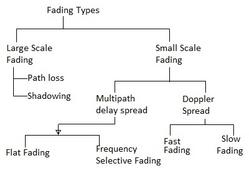
Single-User vs. Multi-User MIMO: Key Differences
Explore the distinctions between SU-MIMO and MU-MIMO technologies in wireless communication, focusing on how they enhance network performance for single or multiple devices.
Showing 20 posts (Page 120 of 162)
Advertisement

Explore the distinctions between SU-MIMO and MU-MIMO technologies in wireless communication, focusing on how they enhance network performance for single or multiple devices.

Explore the benefits and drawbacks of sinuous antennas, also known as spiral antennas, including their dual polarization capabilities and applications.
A comparison of SIP and IAX protocols, highlighting their differences in bandwidth, structure, robustness, extensibility, and security in VoIP technology.

Explore the differences between SIP and PRI trunking, their advantages, disadvantages, and how they connect PBX systems to the PSTN.

Explore the differences between SISO, SIPO, PISO, and PIPO shift registers, their configurations, and clock pulse requirements for data input and output.

Understand SIW (Substrate Integrated Waveguides) mode, its structure, and the dominant TE10 mode. Explore cutoff frequency calculations and related waveguide concepts.

Explore the pros and cons of Substrate Integrated Waveguide (SIW) technology, including power handling, losses, cost, and design considerations.

Explore Sixth Sense Technology, its advantages like portability and gesture-based control, and disadvantages like gesture recognition challenges and hardware dependency.

Explore the difference between skin effect and skin depth in RF circuits. Learn how AC current concentrates on the conductor surface and how to calculate skin depth.

Comparison of ground wave, sky wave, and line of sight (LOS) propagation methods. Understand frequency ranges, characteristics, and applications of each.

Explore the differences between slat and tile array antennas, their advantages, disadvantages, and applications in AESA radar systems.

Explore the SLIMbus interface protocol, designed for audio transport between cellular modems and application processors, highlighting its key features and benefits.
Explore the differences between SLIP and PPP, two protocols used for dial-up internet. Learn about SLIP's limitations and how PPP addresses them, making it the dominant protocol today.

Explore the key differences between slow and fast frequency hopping in GSM, focusing on their hopping rates relative to the data symbol rate and their respective benefits.

Explore the benefits and drawbacks of small cells, including coverage extension, increased network capacity, deployment costs, and technical challenges.

Explore the differences between small scale and large scale fading in wireless communication, including their causes, characteristics, and impact on signal strength.
Explore the differences between SmallSats and CubeSats, covering their definitions, size variations, form factors, costs, applications, and launch methods.
Explore the world of small satellites (SmallSats): their classifications, applications, advantages, and disadvantages in space exploration and technology.

Explore the benefits and drawbacks of smart agriculture, including resource optimization, cost-effectiveness, and the challenges of internet dependency and technological proficiency.
Explore the fundamentals of smart antennas, including their types (phased array and adaptive array), applications, and advantages in wireless communication systems.
Advertisement